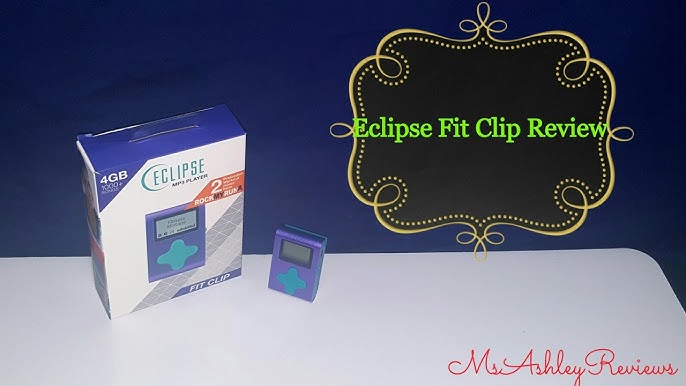The Eclipse Fit Clip is a popular tool for managing and optimizing your Eclipse-based applications. However, users sometimes encounter the need to erase or reset this manual for various reasons, such as troubleshooting issues, decluttering, or starting fresh with new settings.
In this article we will discuss about “ How to Erase Eclipse Fit Clip Manual”.
Understanding Eclipse Fit Clip:

Before diving into the erasing process, it’s essential to understand what the Eclipse Fit Clip manual entails. The Eclipse Fit Clip is a part of the Eclipse IDE (Integrated Development Environment) that assists developers in managing their projects and improving workflow efficiency. The manual often includes configurations, preferences, and custom settings that users can modify. However, sometimes these settings can become outdated or corrupted, leading to errors or decreased performance.
Reasons to Erase the Eclipse Fit Clip Manual:
- Troubleshooting: If you’re experiencing persistent issues with your Eclipse environment, resetting the Fit Clip manual can help resolve conflicts caused by misconfigurations.
- Decluttering: Over time, unused or obsolete settings can accumulate. Erasing the manual allows for a cleaner and more efficient workspace.
- Starting Fresh: If you’re transitioning to a new project or workflow, it can be beneficial to remove old settings that may interfere with new configurations.
- Performance Improvement: Sometimes, a cluttered configuration can slow down the IDE. Resetting settings can enhance performance.
- Security Considerations: Old configurations may contain sensitive information or permissions that are no longer relevant. Erasing the manual helps ensure that outdated or insecure settings don’t pose a risk to your project or data.
Steps to Erase the Eclipse Fit Clip Manual:

Step 1: Backup Your Settings:
Before making any changes, it’s crucial to back up your current settings. This ensures you can restore them if needed later. Here’s how to do it:
1. Open Eclipse: Launch your Eclipse IDE.
2. Access Preferences: Navigate to Window > Preferences.
3. Export Preferences: In the Preferences dialog, select the Export button. Choose the settings you want to save and specify a location on your computer.
Step 2: Close Eclipse:
To make any changes to the Fit Clip manual, you must first close the Eclipse IDE. This will ensure that no files are in use and that your changes will be effective immediately.
Step 3: Locate the Fit Clip Manual Files:
The Fit Clip manual is typically stored in your Eclipse workspace or installation directory. Here’s how to find it:
1. Navigate to Workspace: Go to your Eclipse workspace directory. This is usually located in a path like C:\Users\<YourUsername>\workspace.
2. Find the Configuration Folder: Look for a folder named .metadata, and then navigate to .plugins > org.eclipse.core.runtime > settings. Inside, you will find various configuration files related to your Eclipse setup.
Step 4: Identify and Erase Manual Files:
In the settings folder, look for files specifically associated with the Fit Clip manual. These might include configuration files or caches.
1. Select Files: Identify any files that seem related to the Fit Clip. Common files might include those that start with fitclip or similar naming conventions.
2. Delete Files: Carefully delete these files. If you’re uncertain about a file, it’s best to move it to a different location instead of permanently deleting it, allowing you to restore it if needed.
Step 5: Clear Eclipse Cache:
Eclipse maintains a cache that can also impact performance. Clearing this cache can help further:
1. Navigate to the Cache Folder: Go to the .metadata folder in your workspace.
2. Delete the Cache: Locate the org.eclipse.e4.workbench and org.eclipse.jdt.core cache folders. Delete these folders to clear any cached data.
Step 6: Restart Eclipse
After you have deleted the necessary files and cleared the cache, restart the Eclipse IDE.
1. Launch Eclipse: Open the IDE again.
2. Check Configuration: You may need to set up your preferences anew, as the manual has been erased.
Step 7: Reconfigure the Fit Clip:
Once Eclipse is restarted, you’ll want to reconfigure the Fit Clip according to your needs.
- Access Preferences Again: Go back to Window > Preferences.
- Set Up Fit Clip: Re-establish your Fit Clip settings, including any specific configurations required for your current projects.
Step 8: Test Your Configuration:
After reconfiguring the Fit Clip, it’s essential to test it to ensure that everything is functioning correctly.
1. Open a Project: Load one of your existing projects or create a new one.
2. Verify Functionality: Check if the Fit Clip is working as intended and whether any previous issues have been resolved.
Additional Tips for Maintaining Your Eclipse Environment:
- Regular Backups: Make it a habit to back up your Eclipse settings regularly, especially before making significant changes.
- Stay Updated: Keep your Eclipse IDE updated to benefit from performance improvements and bug fixes.
- Utilize Plugins Wisely: While plugins can enhance functionality, having too many can clutter your environment and slow it down.
FAQs:
1. What is the Eclipse Fit Clip manual?
The Eclipse Fit Clip manual contains configurations and custom settings that help manage projects in the Eclipse IDE, optimizing workflow efficiency.
2. Why should I erase the Fit Clip manual?
Erasing the manual can resolve persistent issues, declutter settings, improve performance, and allow for a fresh start with new projects or workflows.
3. How do I back up my settings before erasing the manual?
You can back up settings by navigating to Window > Preferences in Eclipse and using the Export option to save your configurations to a specified location.
4. What files should I delete to erase the Fit Clip manual?
Look for configuration files related to the Fit Clip in the .metadata folder of your Eclipse workspace, especially those that start with “fitclip.”
5. Will I lose my settings permanently by erasing the Fit Clip manual?
If you back up your settings before erasing the manual, you can restore them if needed, ensuring you won’t lose important configurations permanently.
Conclusion:
Erasing the Eclipse Fit Clip manual can significantly improve your development experience by resolving conflicts and enhancing performance. By following the steps outlined above, you can effectively reset your configurations and maintain a clean workspace tailored to your current project needs.